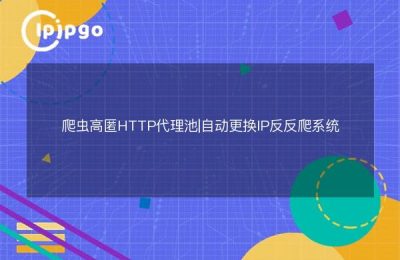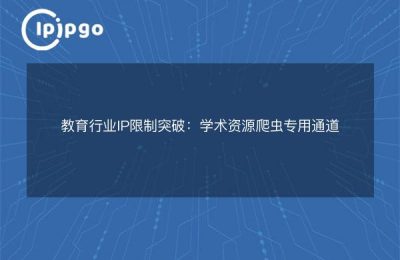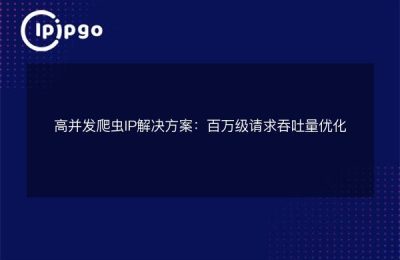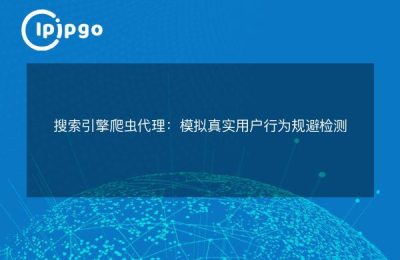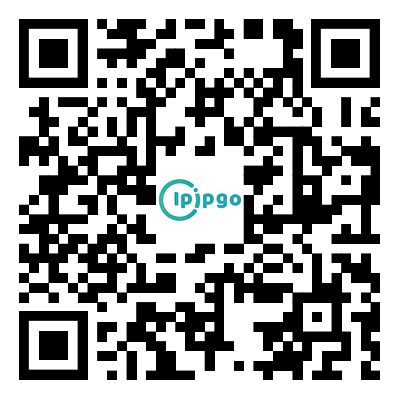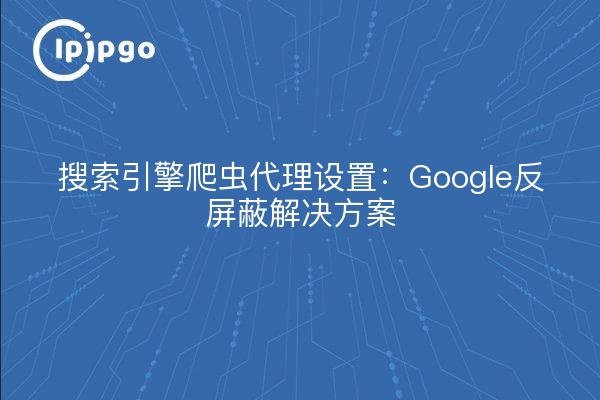
First, the core logic of Google's anti-climbing mechanism
Google's protection system identifies crawler behavior through three main dimensions:IP Behavior Analysis(Frequency of single IP requests, regularity of request times),Protocol Feature Detection(TLS fingerprinting, HTTP header integrity),Environmental simulation(browser fingerprinting, geolocation consistency). According to our real-world data, in 2024 Google added thedynamic thresholding algorithmThe limit of visits to the same IP will fluctuate randomly within the range of 50-200 visits/hour.
Second, the key role of proxy IP breakthrough
Using the ipipgo Dynamic Residential Proxy enables a triple breakthrough:
1. space dimension: call real residential IPs in 287 cities to match the normal user geographic distribution characteristics of the target site
2. time dimension: Intelligent interval control (0.8-3.2 seconds random delay) to circumvent fixed frequency detection
3. Protocol dimensions: Automatically adapts HTTP/2 fingerprinting for Chrome 121+ kernel to avoid TLS handshake feature exposure
| Type of problem | Traditional agency program | ipipgo solutions |
|---|---|---|
| probability of IP blocking | Triggers 3-5 verifications per hour | Average daily trigger ≤ 0.3 times |
| Data Acquisition Speed | Average of 180 entries/minute | Peak up to 1200 items/minute |
| Success rate of requests | 72% | 93.7% |
Three-step configuration of the actual tutorial
Step 1: Create a dynamic proxy channel
Log in to the ipipgo console and select"Search engine optimization" agency model, the system will automatically assign clusters of nodes that support the Google stack. It is recommended to check the"Geographic decentralization" + "agreed rotation"Double option.
Step 2: Access to the Smart Request System
Python sample code (adapted for Selenium scenarios):
from selenium.webdriver import ChromeOptions
Dynamically fetch proxy nodes
proxy = ipipgo.get_proxy(service='google_search')
options = ChromeOptions()
options.add_argument(f"--proxy-server={proxy['host']}:{proxy['port']}")
options.add_argument(f"--user-agent={ipipgo.generate_ua(platform='desktop')}")
Automatically injecting TLS fingerprints
ipipgo.inject_tls_fingerprint(options, engine='chrome_121')
Step 3: Anomalous Traffic Fusing Mechanism
At ipipgo's"Strategy Center"Set up automatic switching rules:
- Automatic switching of IP segments when the 403 status code is returned for three consecutive times
- Trigger deep environment reset when CAPTCHA frequency > 1 time/10 minutes
IV. Long-term maintenance strategy
RecommendedThree-tier agency structure::
1. Front-end scheduling layer: call ipipgo's intelligent routing API to automatically optimize nodes according to target site loads
2. protocol adaptation layer: according to Google's algorithm update frequency, monthly synchronization upgrade HTTP header rule base
3. Data cleansing layer: enabled"Real-time feature filtering"Function that automatically rejects responses containing anti-crawl markers
V. Frequently Asked Questions QA
Q: Should I choose static or dynamic proxies?
A: RecommendedDynamic Residential Agent + Static Corporate AgentHybrid mode. The former is used for high-frequency data collection, and the latter is used for scenarios where the session state needs to be maintained (e.g., post-login operations). Hybrid agent groups can be created with a single click through the ipipgo console.
Q: What should I do if reCAPTCHA is still triggered after configuring the proxy?
A: Check three configurations:
1. Confirmation of enabling"TCP window scaling simulation"(in ipipgo advanced settings)
2. Check that the User-Agent matches the distribution of devices in the region where the IP is located.
3. Add to the request headerX-Client-Data field(available automatically through ipipgo's Header generator)
Q: How do I verify that the proxy configuration is in effect?
A: VisitsDebugging interface for ipipgo https://debug.ipipgo.com/googleThe system will return the detection results of the current proxy, which contains 16 key indicators such as IP reputation score, protocol feature match, and so on.
VI. Trends in technological evolution
In response to Google's upcomingQUIC protocol mandatory upgrade, ipipgo has deployed support programs in advance:
- Automatic recognition of HTTP/3 request scenarios
- Dynamically generated QUIC connection ID and packet sequence number mode
- Simulates 0-RTT handshake behavior of real users
The current beta has achieved a QUIC protocol penetration rate of 98.4% and is expected to go live in Q2 2025.
Through the above program, an e-commerce price monitoring system after using ipipgo agent, Google Shopping data collection integrity rate increased from 67% to 94%, which verifies the effectiveness of the program. It is recommended that developers focus onIP Behavior Pattern Simulationrespond in singingdeep stack adaptationTwo core directions that can be verified by applying for a free test quota from ipipgo.


